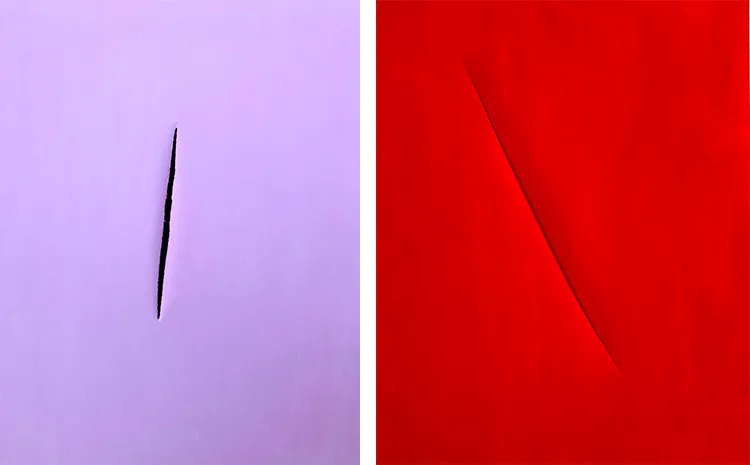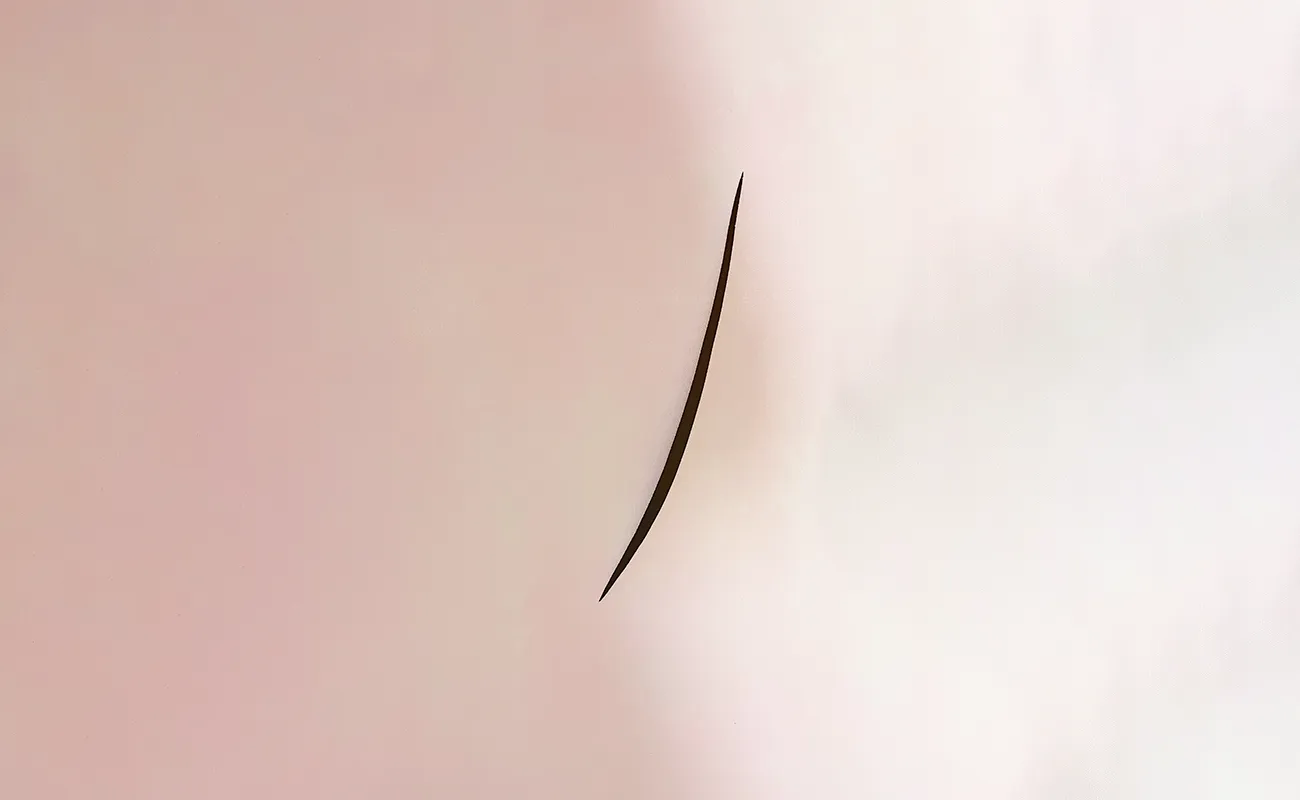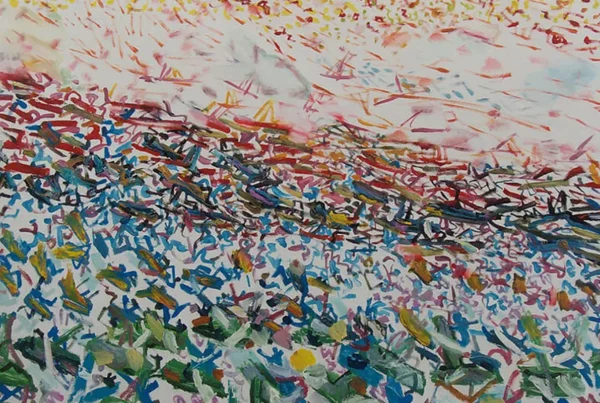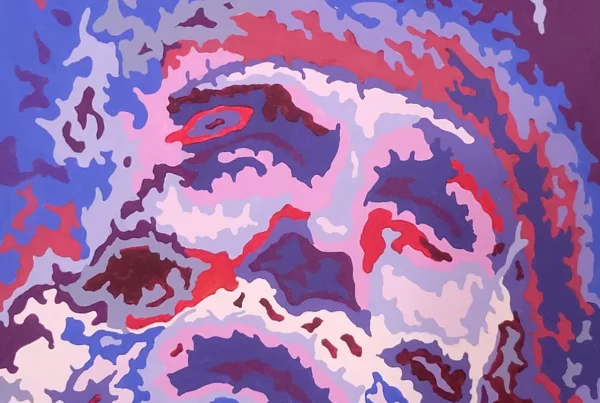“Where I think I can offer a value in art is in adaptations of others’ works.”
A Rural Foundation Shapes an Artistic Vision
Zeb Lund’s journey into the world of art is deeply rooted in his upbringing in the rural landscapes of Nebraska. Born and raised in a small village on the northern Great Plains, Lund’s childhood was steeped in the traditions of hands-on craftsmanship, from carpentry and construction to metalworking and mechanics. The vast agricultural expanses surrounding him, where fields of corn stretch endlessly to the north and east, and pastures dominate the south and west, provided a unique backdrop that shaped his understanding of space and material. Growing up in an environment driven by agriculture and production gave Lund an intimate connection to the physicality of making things, which would later inform his art.
Rather than pursuing a direct path toward the arts, Lund became an architect, where he honed his skills in drawing and conceptualizing space. The discipline of architecture, with its focus on structure, precision, and design, became a natural extension of his early life experiences. This architectural background is evident in his work, where space, form, and materiality take center stage. His creations reflect an awareness of time and craftsmanship, drawing upon his history in rural Nebraska, yet transcending the confines of his formal training. The act of making is central to his practice, and his artistic output is fueled by the curiosity and hands-on experimentation instilled in him from a young age.
This connection between his upbringing and his art blurs the lines between his career as an architect and his creative endeavors. For Lund, art is not something that he simply does; it’s an ongoing process—a need to tinker, study, and create. His work embodies a lifelong conversation with space, material, and history, where each piece becomes a reflection of his journey through the worlds of construction and design.
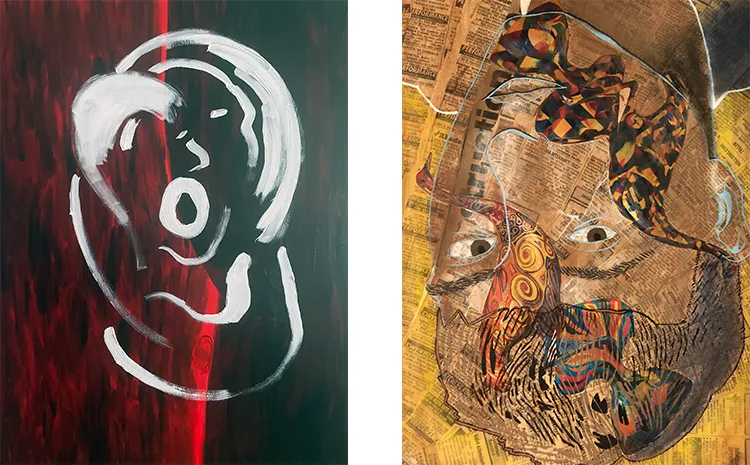
Zeb Lund: Tapping into the Boundless Potential of Mediums
Lund’s artistic approach is marked by a refusal to be confined to a single style or medium. Instead, his work unfolds as a series of explorations—studies in which he pushes the limits of various materials and forms. While some artists might settle into a signature style, Lund thrives on the freedom to experiment, inspired by the careers of those like Bruce Nauman, who similarly moved fluidly between disciplines. His process is driven by a relentless curiosity, where each material—from acrylics and oils to digital media and even raw construction materials like 2x4s—is tested for its potential to convey something new.
In one piece, the thick textures of paint create a tactile, almost sculptural quality, inviting the viewer to engage with the work on a visceral level. The physicality of his gestures is captured in the layers of paint, where movement and energy seem to be suspended in time. These pieces are bold, full of life, and demand attention, not just through their visual impact but through the suggestion of touch and movement. They challenge the boundary between two-dimensional painting and sculpture, embodying Lund’s fascination with how materials can hold and express energy.
Conversely, Lund’s minimalist works offer a stark contrast, focusing on the power of simplicity. These pieces explore the tension between presence and absence, where a single line or a stark, negative space invites quiet contemplation. There’s a restraint in these works that speaks to Lund’s understanding of form and space—a reflection of his architectural sensibilities. These moments of simplicity are as much about what’s left out as what’s included, creating an opportunity for the viewer to fill in the blanks with their own interpretations. His minimalist works embody a kind of quiet power, proving that less can indeed be more in the right hands.

Embracing Distractions as Creative Catalysts
The environment in which an artist works can significantly influence their output, and for Lund, certain elements are crucial. Silence, or a consistent background hum, provides the auditory backdrop he needs to focus. Light, too, plays an essential role, highlighting the importance of visibility and clarity in both his architectural and artistic processes. Yet, while these controlled elements are important, Lund embraces distractions with open arms, seeing them as an integral part of his creative process. Where others might find interruptions a hindrance, Lund sees them as opportunities to follow new paths, letting his work evolve organically with each unexpected turn.
His workspace, in its ideal form, is a place where thought and movement are unrestricted. Physical space is necessary for him to think and move freely, allowing his ideas to take shape without constraint. With the added pleasures of good coffee or a well-poured drink, Lund’s studio becomes a sanctuary for both disciplined focus and spontaneous creativity. The interplay between structure and chaos is central to his process—much like his approach to materials, where he enjoys pushing boundaries and testing limits.
This embrace of spontaneity is reflected in the variety of mediums and forms that define his artistic practice. Whether he’s working on a highly textured canvas or a minimalist digital composition, distractions often lead to unexpected results. For Lund, the creative process is not about rigidly adhering to a plan but about allowing himself to be guided by the unpredictable, letting his work evolve naturally. In this way, distractions become creative catalysts, pushing his work in new directions and keeping his practice fresh and dynamic.

Zeb Lund: Dialogue with Artistic Giants
Influences are crucial to any artist’s development, and for Zeb Lund, his work is deeply indebted to the giants of the art world who have come before him. He draws particular inspiration from artists like Piranesi, Lucio Fontana, and Mark Rothko—creators who each brought something radically unique to the table. From Piranesi’s dramatic architectural engravings to Fontana’s revolutionary spatial concepts and Rothko’s emotive color fields, these figures have left an indelible mark on Lund’s artistic philosophy.
However, it is not only these historical influences that guide him; Lund finds profound meaning in the work of Francis Bacon, particularly his “Studies of Pope Innocent X.” Though these are not his own creations, the conversations he has had with Bacon’s works have been instrumental in shaping his thoughts about art. Bacon’s ability to evoke intense emotion through distortion and abstraction resonates with Lund’s desire to engage viewers on both a visceral and intellectual level. The “Pope Innocent X” series, with its haunting exploration of human suffering and existential angst, has sparked countless reflections in Lund, making it a touchstone in his artistic life.
This dialogue with past masters doesn’t end with admiration—it transforms into adaptation. Lund’s art is a continual process of studying, borrowing, and reshaping ideas from the artists he reveres. By blending the lessons from these diverse influences with his own insights and experiences, Lund creates work that is at once rooted in the past and entirely contemporary. His art becomes a living conversation with history, culture, and the ever-changing present, constantly shifting as he seeks to discover what lies just beyond the horizon.
